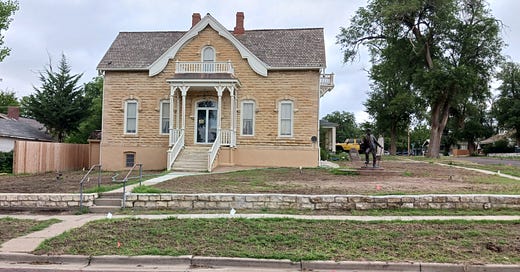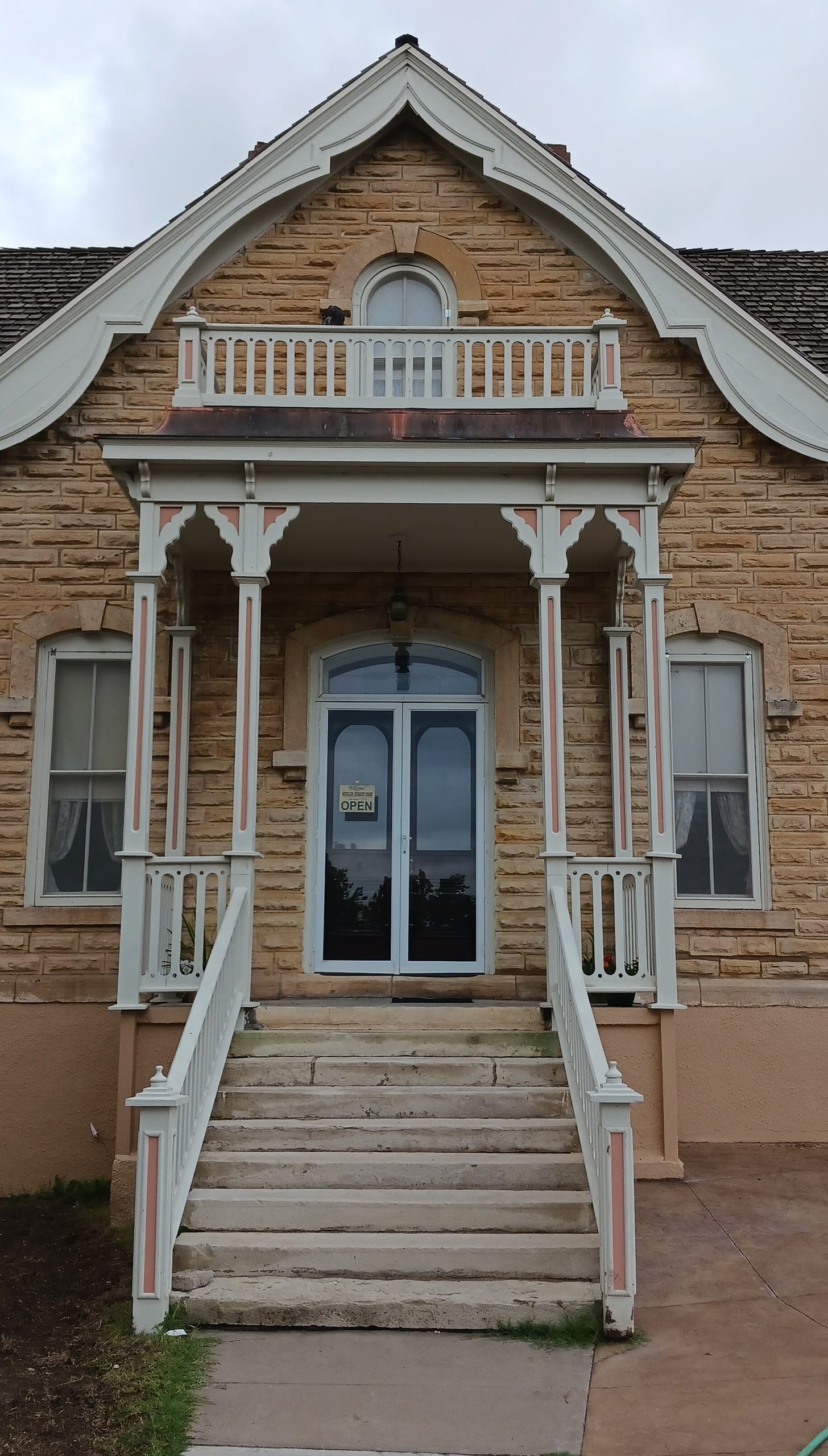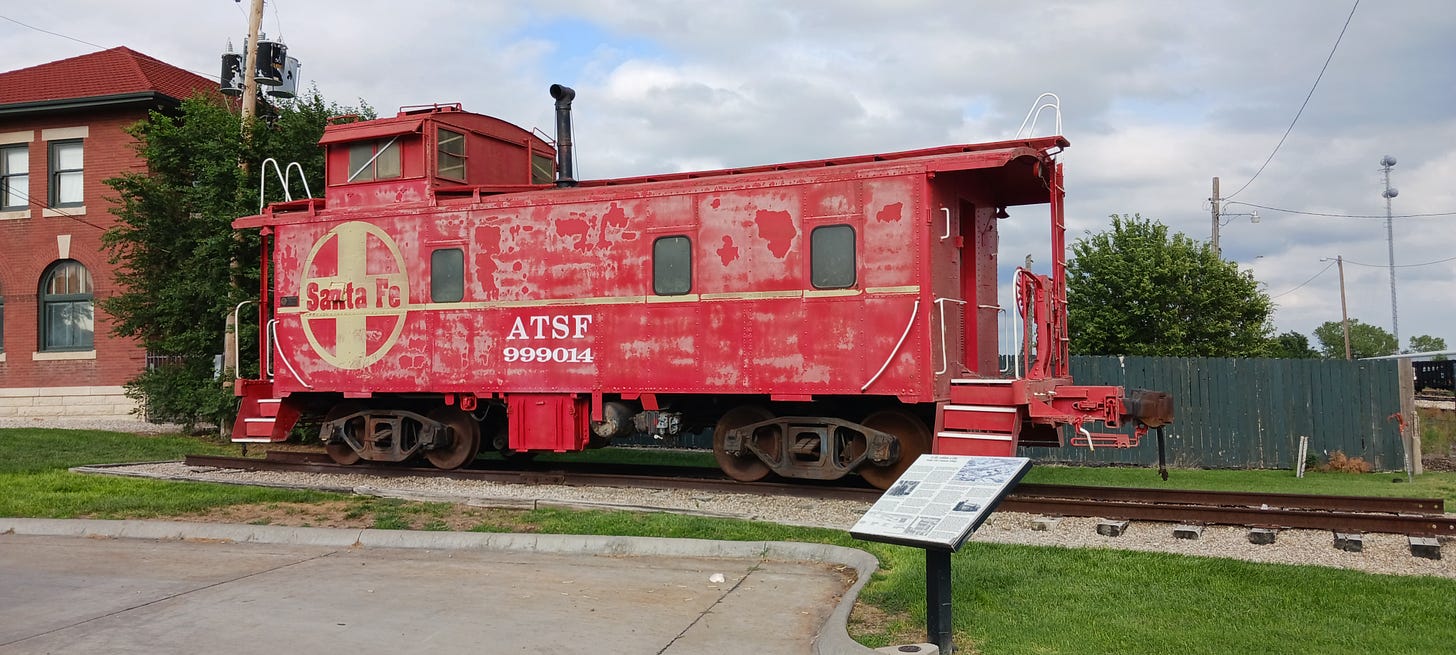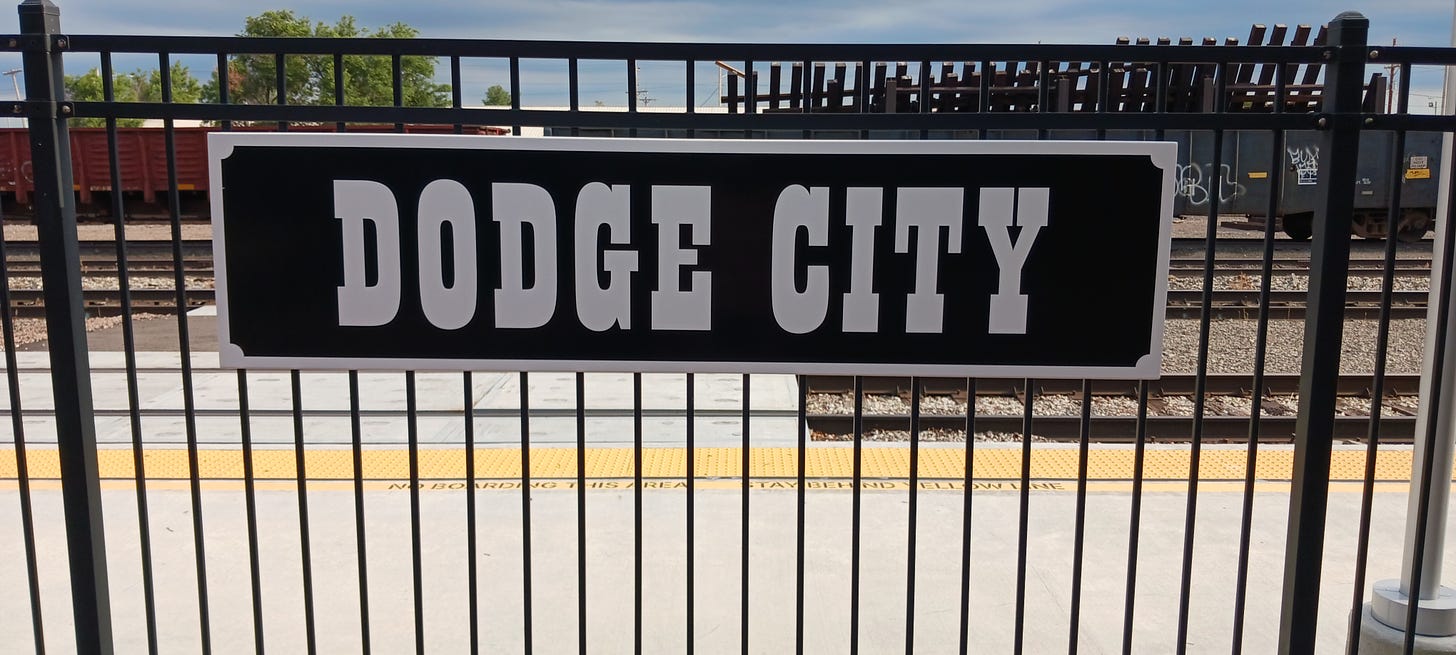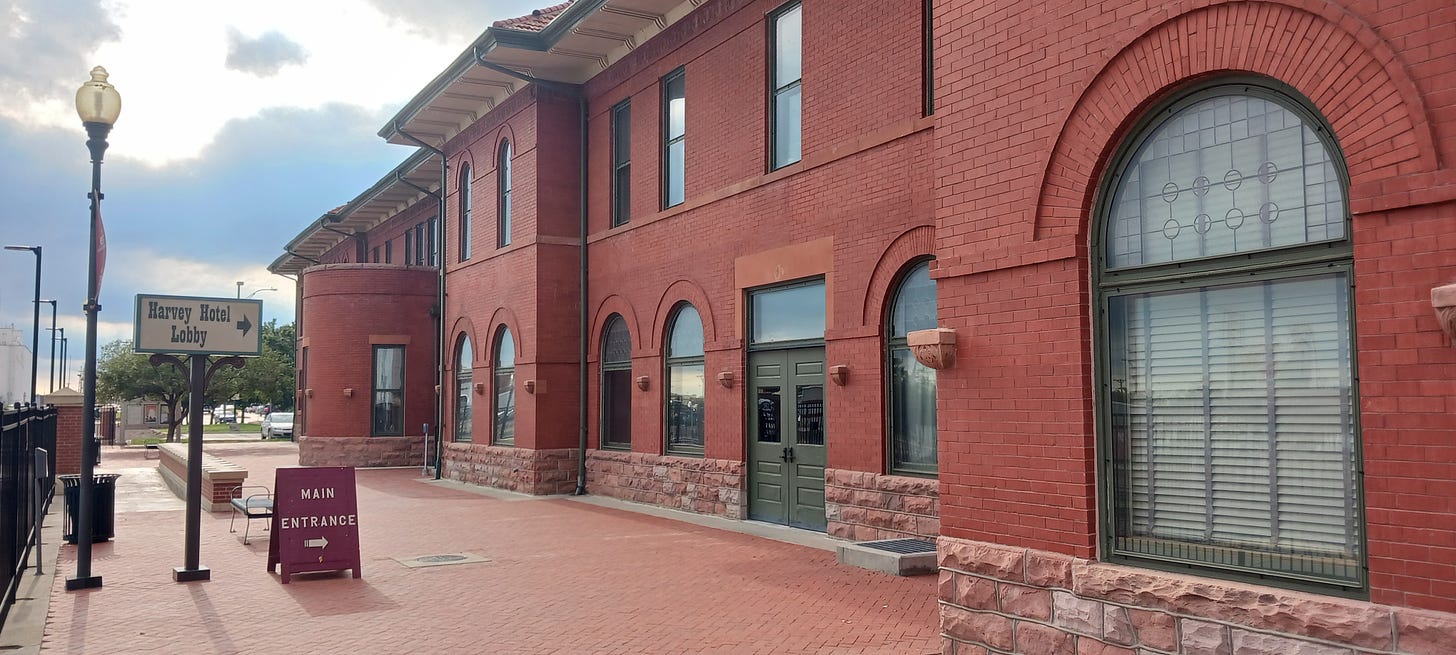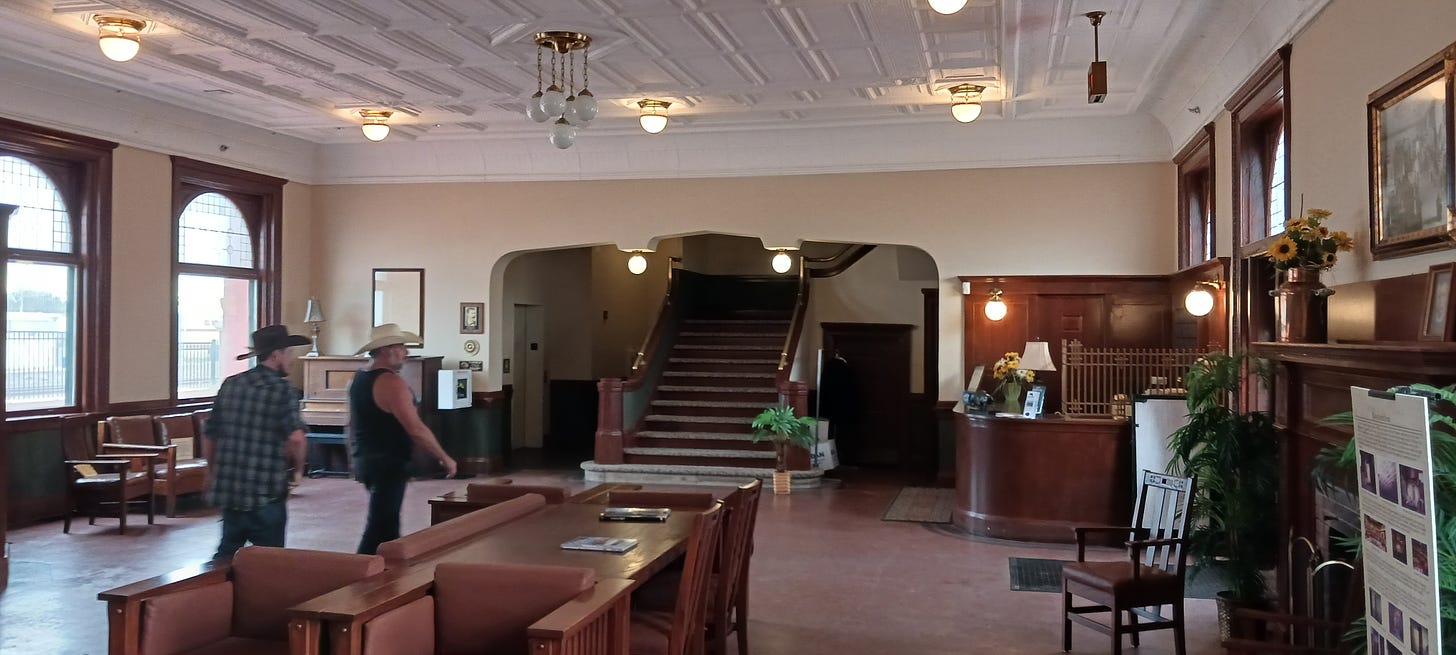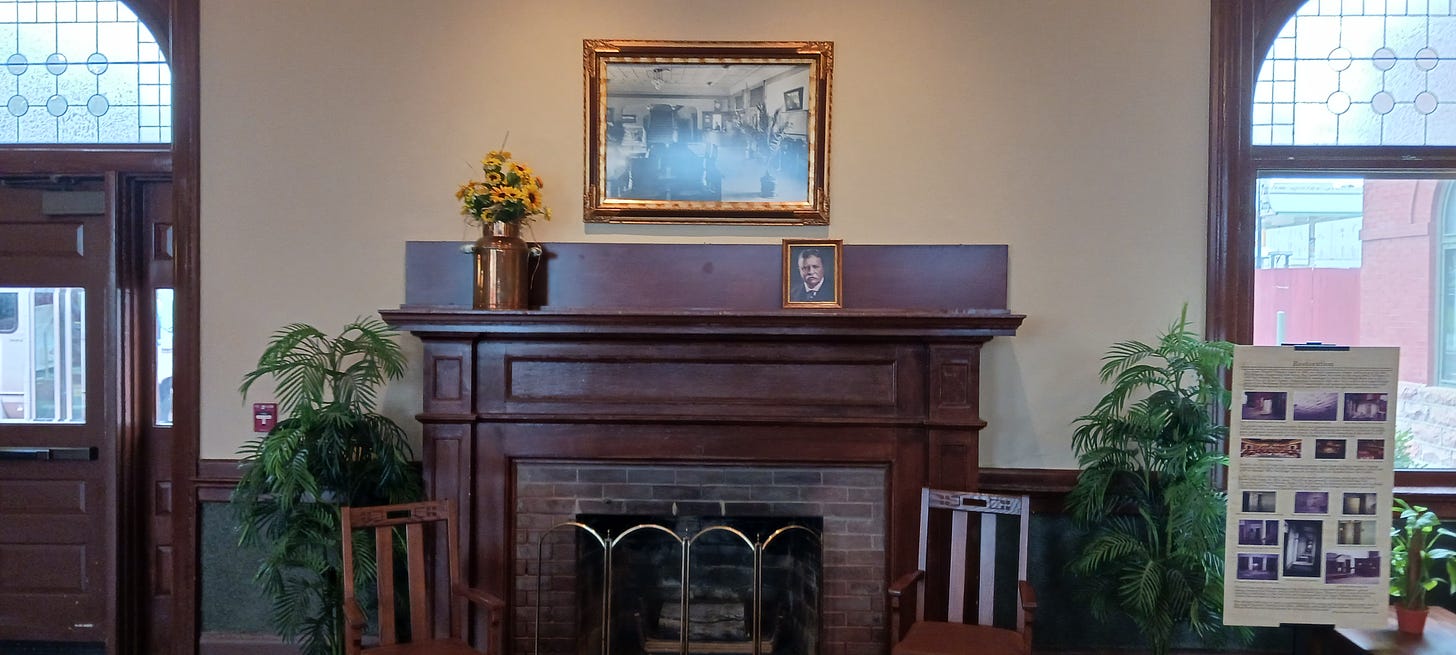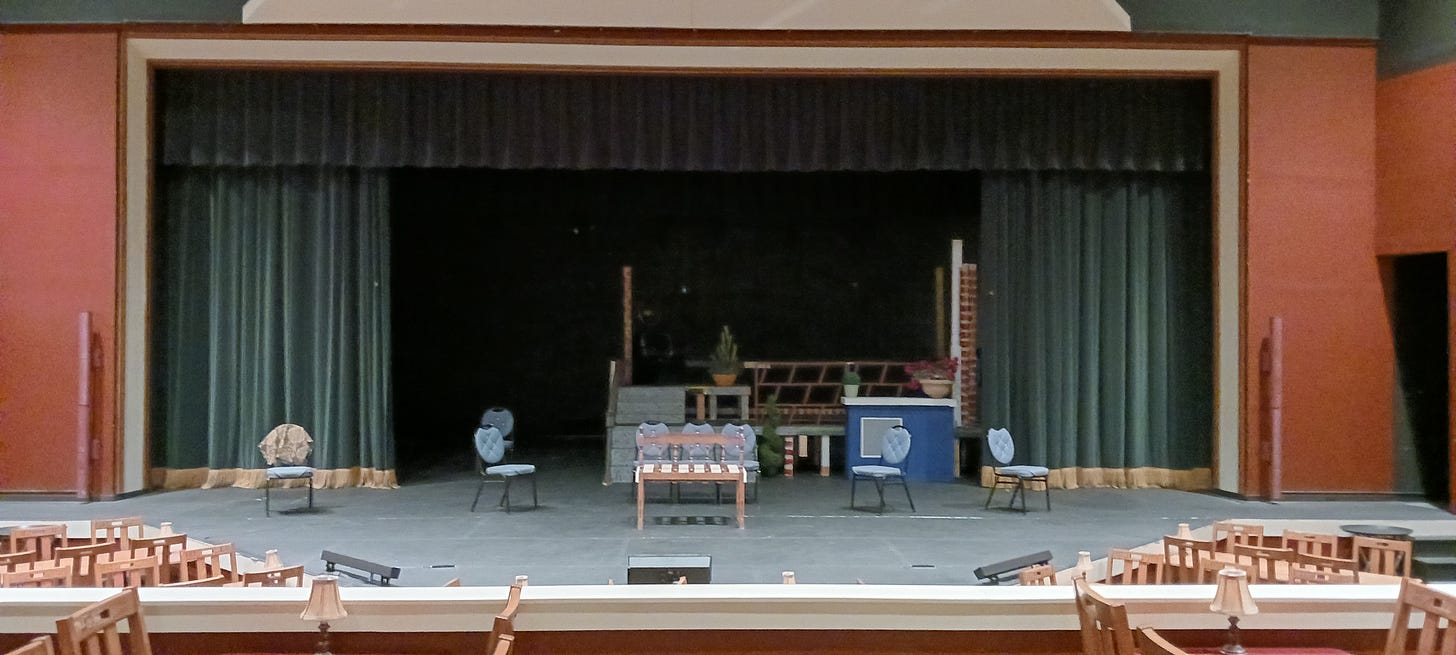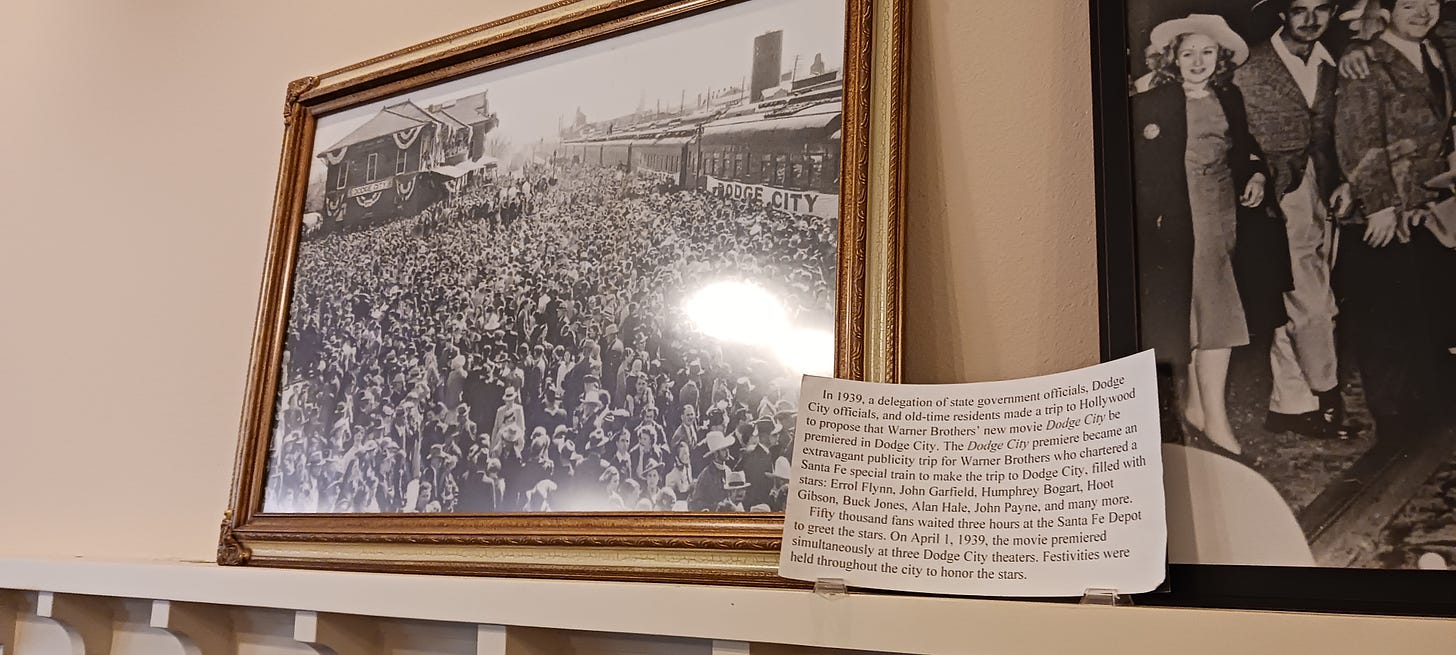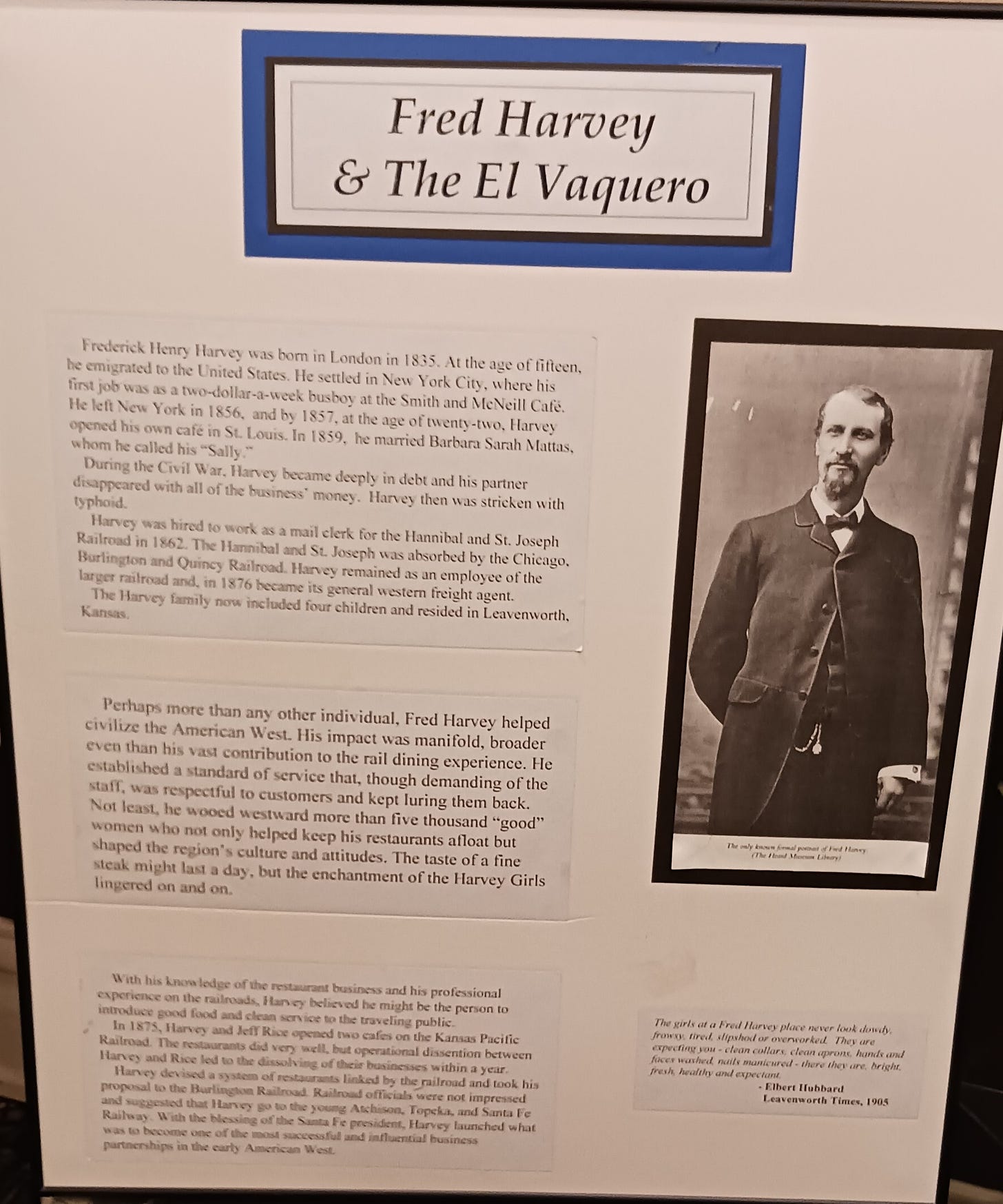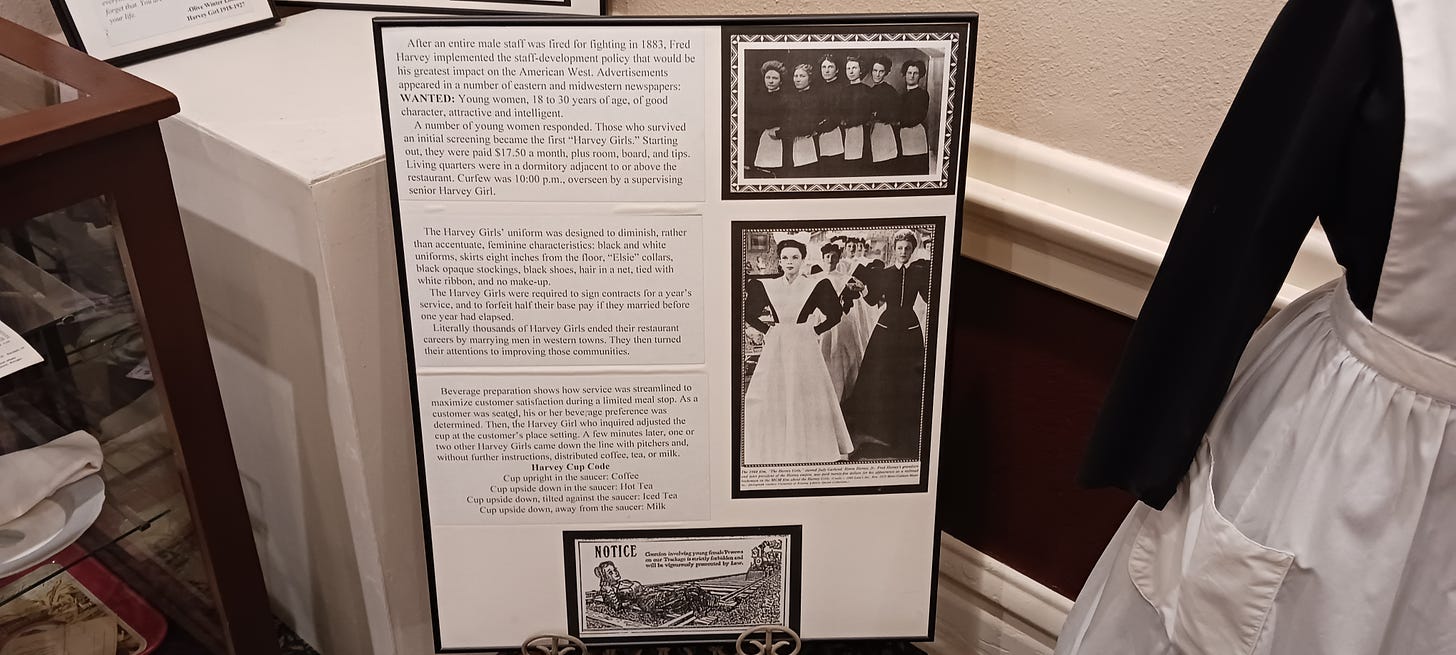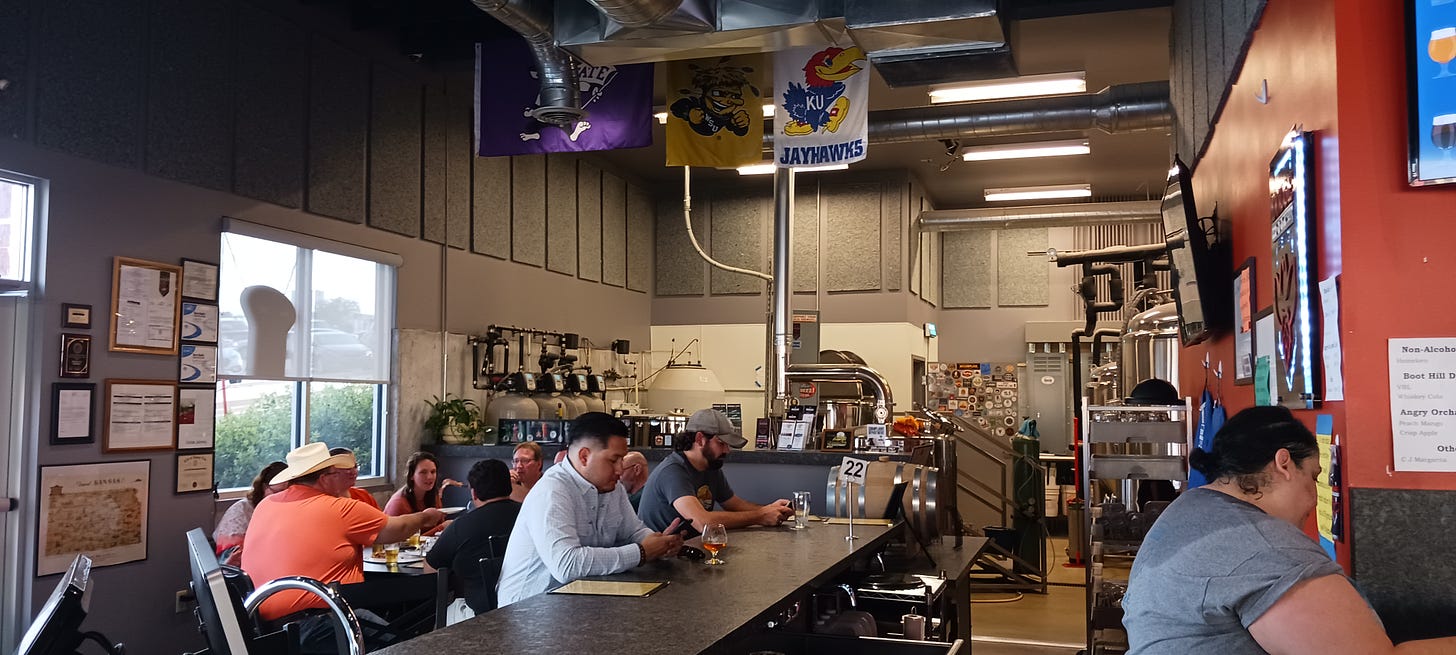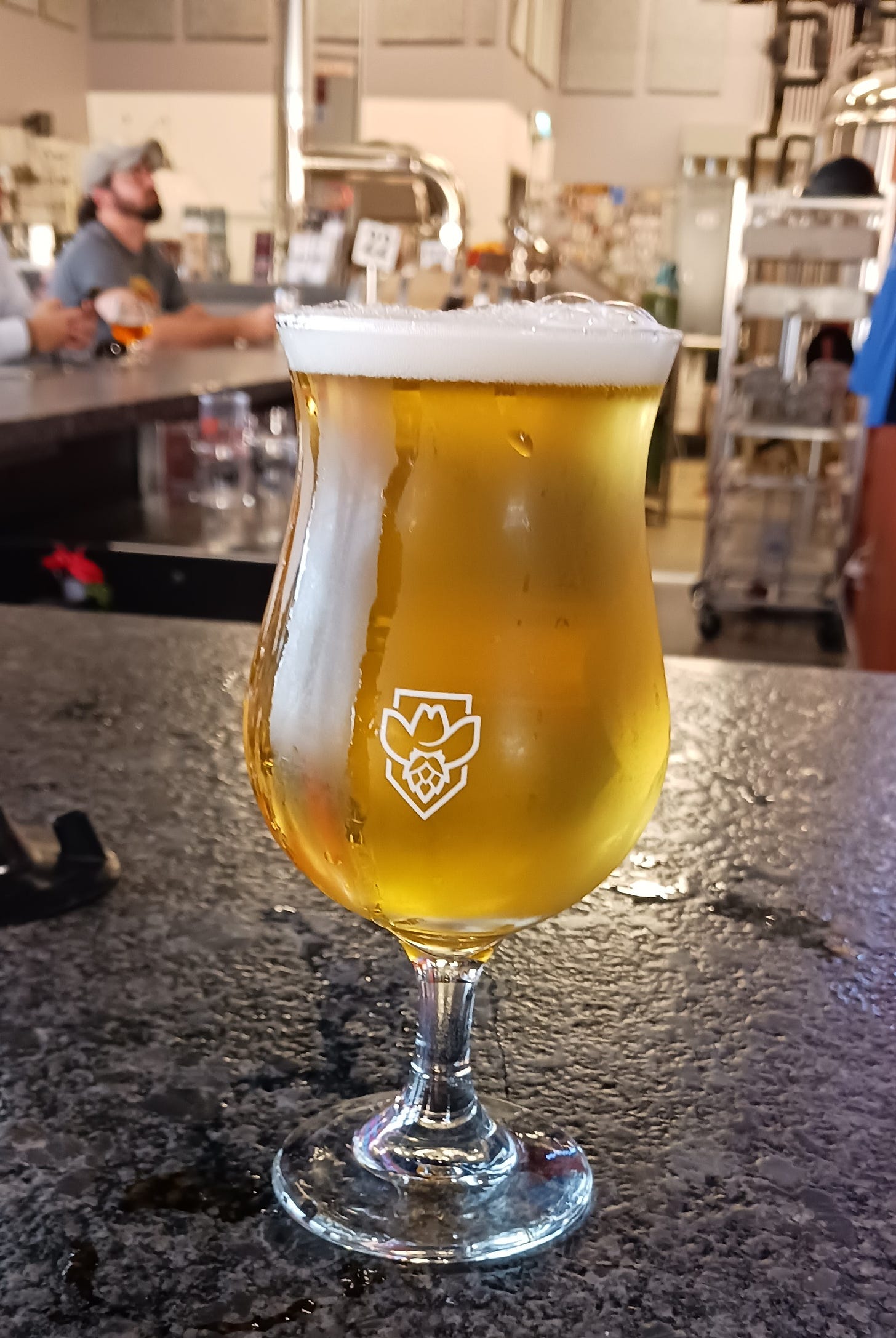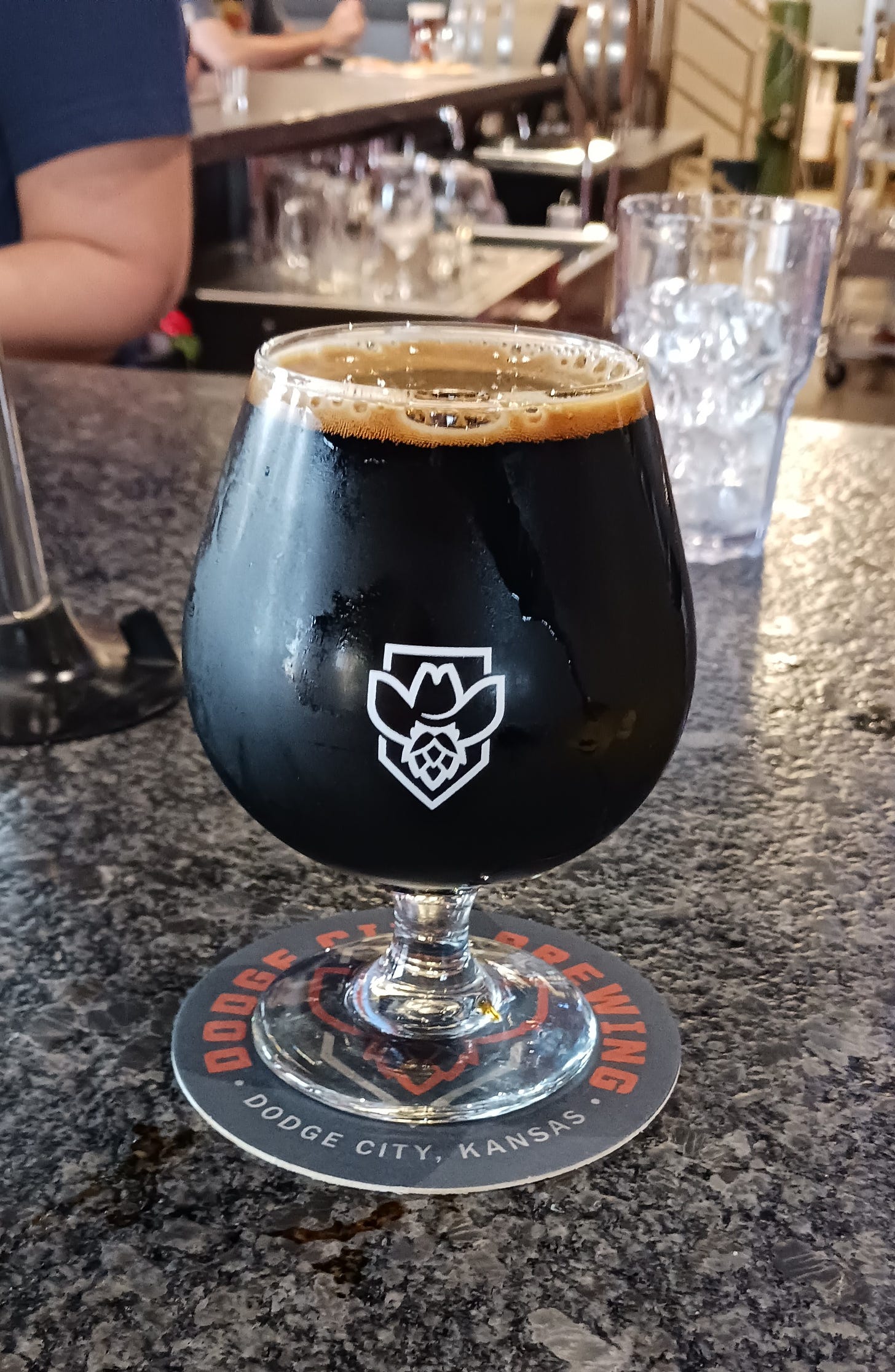Dodge City Days III: Finale--Wasted in Dodge
Nostalgia upon nostalgia, and an inglorious end to my day
You can find the previous installments of this essay on my trip to Dodge City here:
Dodge City Days: a Photo Essay
Dodge City Days III: Ft. Dodge and the Coronado Cross
Dodge City Days III: Immaculate Heart of Mary
Dodge City Days III: Boot Hill (I)
Dodge City Days III: Boot Hill (II)
Dodge City Days III: Boot Hill Cemetery
Upon leaving Boot Hill, I drove over a few blocks north to see the Old Stone Home, or the Mueller-Schmit House. Built by the SeMueller family who moved here from St. Louis, the Old Stone Home is the oldest building in DC still on its original site. Built in 1882 atop a hill north of town, it is built of limestone, one of the few remaining from the old days of the town. According to the docent, the Mueller’s had German craftsman from St. Louis build parts of the house, and even ordered some of them from Germany. The Mueller’s sold the building to the Schmidt family in 1890, during the depression that hit in that decade. Their family occupied the house until the 1960s, when the surviving Schmidt children sold it to the Ford County Historical Society, which still maintains it today.
The railroad made the Midwest in many respects, as the railroad companies put on an advertising blitz designed to get people to settle in the Great Plains, promising cheap land flowing with milk and honey. The reality, of course, was much different, and many struggled to make a living on the hard dry soil of the plains. The federal government encouraged settlement as well, conducting an extensive advertising campaign in Europe to attract settlers. The way it is portrayed in film and media, people just spontaneously went to settle the continent, but that was far from the case.
Settlers were part of a vast economic and political system that its proprietors wanted settled. And what connected all this were the railroads. Specifically, the Santa Fe-Atchison railroad company connected many of the small cattle towns throughout the Midwest. In Dodge, with its leaders flair for using its myths for tourist purposes, they turned the old Santa Fe Depot into a theater, the Santa Fe Theater, which was my last stop on my third day in town.
A symbol that the town had become “civilized,” the Santa Fe Depot was completed in 1897, complete with a hotel. In 1898, a “Harvey House” was added to the station. Harvey Houses were restaurants for passengers name after their creator, Paul Harvey, who began planting them in train depots all over the Midwest in the 1870s. In those days, there were no dining cars, so passenger had to take meals in stops between their journey. Passengers usually only had 20-25 minutes or so before boarding their train, so the servers had to work quickly to ensure passengers could eat in time to catch their train.
Harvey originally hired all male staff to provide service for his customers. But these proved difficult to handle: in 1883, he fired his male staff workers for fighting, and began recruiting women between the ages of 18 and 35 to staff his restaurants. The idea I think was to bring feminine propriety to the unruly Midwest (many of the girls came from the Northeast). It worked. Harvey designed strict rules for dress and modesty (no makeup) among the girls, and housed them in dormitories, expecting them to be “lady-like” at all times. The Harvey Girls gained a reputation that removed the stigma of working in the restaurants, but also removed some of the stigma from society more broadly of working single women. The “Harvey Girls” became so popular that—you guessed it—Hollywood made a film about them in 1944, starring Judy Garland.
There were nothing playing at the theater, as the Dodge City Days festivities were still going on, but they were serving cocktails at the bar that night. I indulged myself in a few, before taking a brief tour of the dining area and the theater itself. Which was, as it turns out, a mistake.
My tour of Dodge and its historic sites impressed upon me one thing very clearly: what we see as “civilization” changes over time, often according to the image we have of ourselves. Our current involves much of what goes under the rubric of “gentrification,” with all that it entails of bringing backward inner city areas into the modern and up-to-date, whatever that means. Dodge has not been “gentrified” exactly, but it does have some of these amenities, notably a distillery, which I visited the night before, and a microbrewery. So, at the end of the day, I decided to top off a quite successful day of sight seeing by down a few beers.
I am not sure how many beers I had exactly, but it was more than the ones I took photos of. And here, my journey took a turn for the worse. Dodge City Brewing Co. does not serve food, and I somehow forgot to eat dinner during all my excursions. By the time I reached my car, my stomach began to turn, and I felt a sickly, nauseating feeling seize my body. I realized I needed something to eat, quickly, so I stumbled—quite literally—across the street to an Appleby’s (definitely not civilization!). Ordering a large soft pretzel, I downed it with water, and sat there watching a basketball game prefunctorily for a number of minutes.
When I felt well enough to stand up and walk, I made my way back across to the parking lot where my car was. The parking lot was just off a main street, at the foot of a hill, and my hotel was only a few blocks away. I thought about just walking it off and making my way back on foot. But I made it back to my car more or less in stable condition. As I unlocked the door and plopped myself into the driver’s seat, I congratulated myself on having averted disaster.
But then, as I was about start the car, I felt a tidal surge burst forth within me and a disgusting tangy, metallic taste in my mouth. I opened the door and leaned out, depositing the beers I’d just consumed upon the concrete, my stomach ejecting them like a fire hose. Two or three more times I did this, until pretty much all of the very wonderful and refreshing brews I put away that night were splattered upon the parkin lot concrete. I waited until my body made clear to me the rush was over, and with that pulled out and drove back to the hotel, where Gus my Yorkie and a clean bed awaited me. Given the day’s exhaustions, I slept quite soundly that night, and only rose late in the morning hours the next day.
